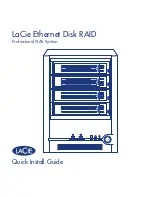
80
−
The total bandwidth occupied by CT 0, CT 1, and CT 2 cannot exceed the maximum
reservable bandwidth.
Figure 31 MAM bandwidth constraints model
3.
Checks whether the CT and the LSP setup/holding priority match an existing TE class.
An MPLS TE tunnel can be established for the CT only when the following conditions are met:
{
Every node along the tunnel has a TE class that matches the CT and the LSP setup priority.
{
Every node along the tunnel has a TE class that matches the CT and the LSP holding
priority.
Bidirectional MPLS TE tunnel
MPLS Transport Profile (MPLS-TP) uses bidirectional MPLS TE tunnels to implement 1:1 and 1+1
protection switching, and to support in-band detection tools and signaling protocols such as OAM
and PSC.
A bidirectional MPLS TE tunnel includes a pair of CRLSPs in opposite directions. It can be
established in the following modes:
•
Co-routed
mode
—Uses the extended RSVP-TE protocol to establish a bidirectional MPLS TE
tunnel. RSVP-TE uses a Path message to advertise the labels assigned by the upstream LSR
to the downstream LSR. RSVP-TE uses a Resv message to advertise the labels assigned by
the downstream LSR to the upstream LSR. During the delivery of the path message, a CRLSP
in one direction is established. During the delivery of the Resv message, a CRLSP in the other
direction is established. The CRLSPs of a bidirectional MPLS TE tunnel established in
co-routed mode use the same path.
•
Associated
mode
—In this mode, you establish a bidirectional MPLS TE tunnel by binding two
unidirectional CRLSPs in opposite directions. The two CRLSPs can be established in different
modes and use different paths. For example, one CRLSP is established statically and the other
CRLSP is established dynamically by RSVP-TE.
For more information about establishing MPLS TE tunnel through RSVP-TE, the Path message, and
the Resv message, see "
Protocols and standards
•
RFC 2702,
Requirements for Traffic Engineering Over MPLS
•
RFC 3564,
Requirements for Support of Differentiated Service-aware MPLS Traffic
Engineering
•
RFC 3812,
Multiprotocol Label Switching (MPLS) Traffic Engineering (TE) Management
Information Base (MIB)
•
RFC 4124,
Protocol Extensions for Support of Diffserv-aware MPLS Traffic Engineering
CT 2
CT 1
CT 0
BC 0
Max reservable BW
BC 1
BC 2
CT 0
CT 1
CT 2
Содержание HPE FlexNetwork MSR Router Series
Страница 10: ...viii Index 540 ...
















































